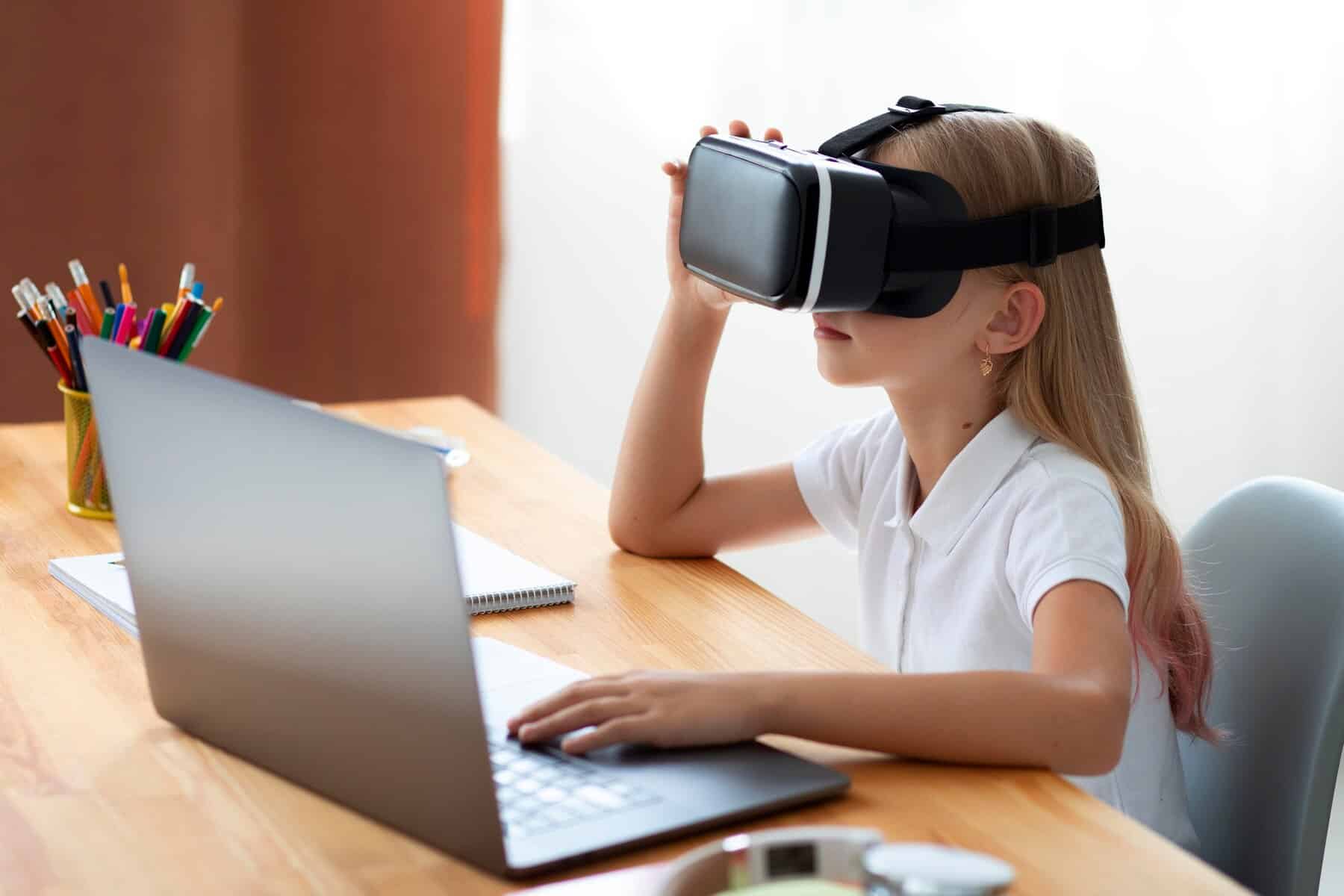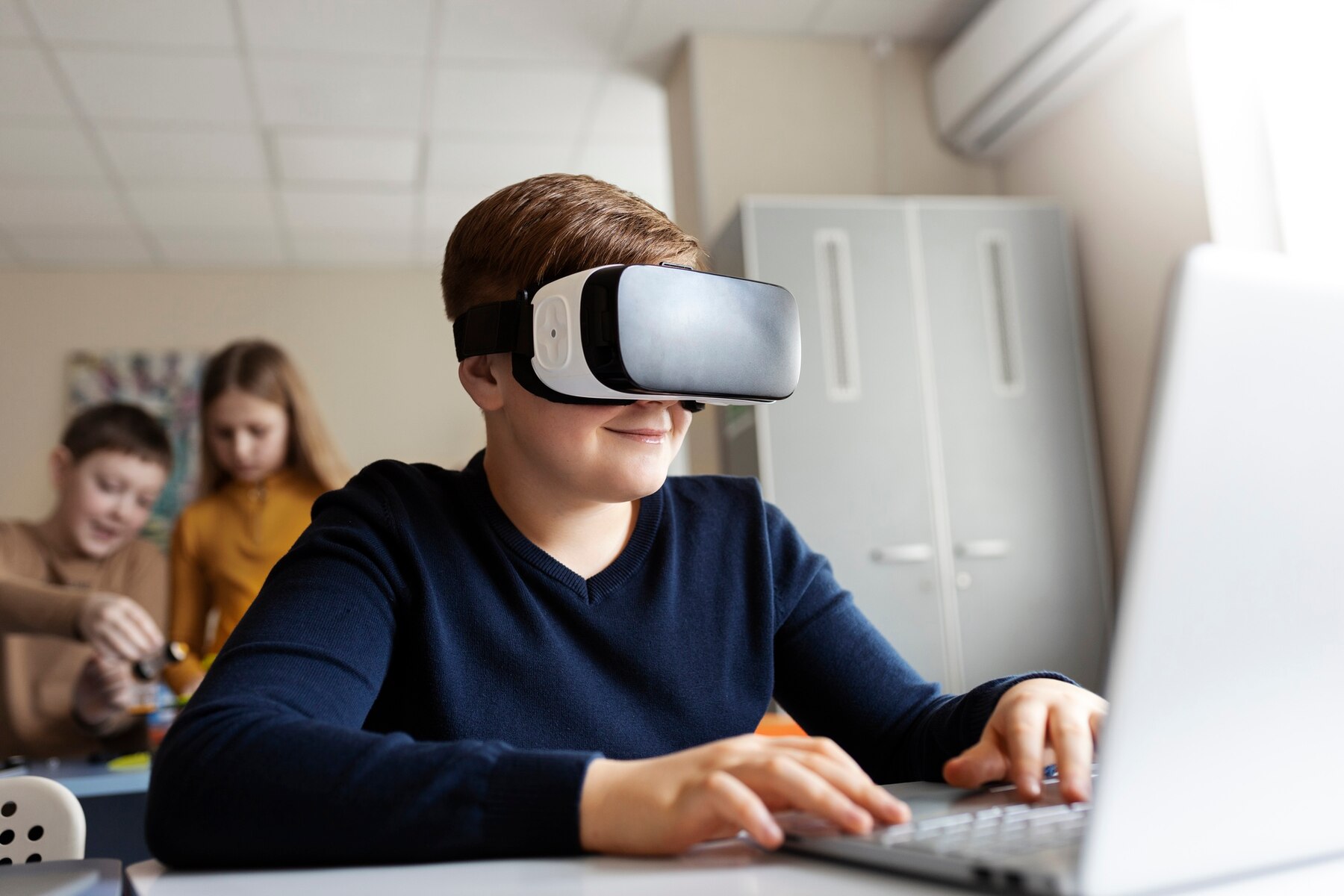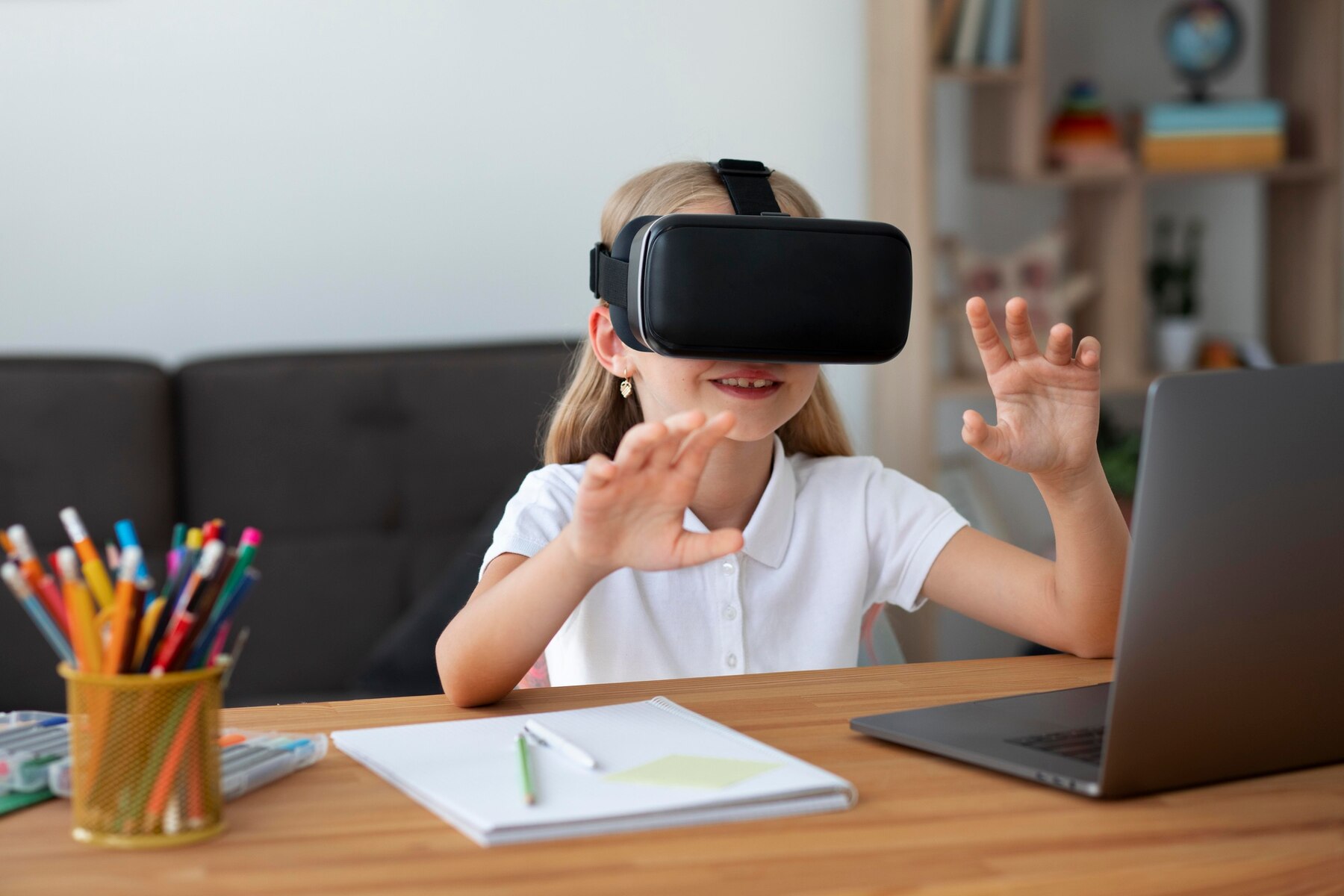
How Virtual Reality is Transforming Education
Technology now plays a key role in education. It changes how we teach and learn. Virtual Reality (VR) is a truly transformative technology. This tool can change education. It makes learning more immersive and engaging than ever. But what exactly is VR in classrooms, and how is it changing the face of education? This guide will cover virtual reality in learning. We will look at the best VR tools for education. We’ll also explore how VR affects both students and teachers.
VR is appealing because it creates immersive spaces. These spaces can mimic real life or take you to imagined worlds. This technology isn’t just a new idea; it’s a game-changer. It opens up endless ways to improve education. VR is creating new ways to explore and learn. It offers virtual field trips and interactive science experiments. Many people still misunderstand the practicality and effectiveness of VR in education, even as it grows in popularity. This blog aims to dispel those myths and provide a clear view of how VR transforms education.

Key Benefits of VR in Education
Enhancing Engagement and Motivation
One of the most significant benefits of using VR in classrooms is its ability to engage students in ways that traditional methods cannot. VR creates a fully immersive experience. It grabs students’ attention and sparks their curiosity. This higher engagement can boost motivation and spark a deeper interest in the topic. A history lesson on ancient civilisations becomes exciting when students can walk through the streets of Rome or explore the pyramids of Egypt virtually.
Facilitating Experiential Learning
VR offers a unique opportunity for experiential learning, where students can learn by doing. This hands-on method works well in subjects like science and engineering. Students can do virtual experiments or build complex structures. They don’t face the limits of a physical lab. By simulating real-world scenarios, VR helps students develop critical thinking and problem-solving skills.
Unlocking Unreachable Experiences
Virtual reality breaks the limits of location and cost. It gives students amazing adventures they never thought possible. Dive into the ocean’s depths or race through distant galaxies. VR makes the impossible possible. It expands our horizons and fosters a global perspective.
Embracing Diverse Learning Styles
Every learner is unique, and VR is a chameleon, adapting to various learning styles. Visual learners enjoy vivid images. Kinesthetic students do best in hands-on settings. They understand ideas by touching and exploring. Auditory learners thrive on rich sounds and captivating stories. Each lesson becomes a multisensory journey for them.
Step-by-Step Guide to Integrating VR in Classrooms
Step 1: Pinpoint Educational Goals
Before jumping into VR, pinpoint precise educational goals. What subjects could dazzle with a dose of virtual magic? Want to boost engagement, encourage hands-on learning, or access new experiences? Defining these objectives will illuminate the path to selecting suitable VR tools and content.
Step 2: Select the Right VR Tools
Choosing the ideal VR tools can make or break your initiative. The options are limitless, from affordable smartphone headsets to elite systems like Oculus Rift and HTC Vive. Factors like budget, user-friendliness, and compatibility are paramount when making your selection. Explore educational platforms like Google Expeditions and Nearpod VR. They provide a wealth of ready-made, engaging experiences.
Step 3: Prep the Infrastructure
To weave VR into classrooms, a solid infrastructure is key. Verify that your school has the essential hardware—think VR headsets and compatible devices. Consider the space required for students to roam freely in their virtual worlds. A dedicated VR lab or a flexible classroom layout can pave the way for seamless integration.
Step 4: Empower Educators
For VR to shine, educators must feel confident and competent with the technology. Provide training sessions and useful resources. This helps teachers learn VR equipment and include it in their lesson plans. Encourage collaboration and the sharing of wisdom among educators, amplifying the impact of VR in the classroom.
Step 5: Evaluate and Evolve
Once VR is plugged in, assessing its effectiveness is vital. Collect feedback from students and teachers to measure engagement, learning results, and satisfaction. This feedback is your compass—use it to refine approaches and discover fresh ways to harness VR in education.

Expert Tips & Pitfalls to Dodge
Expert Tips
- Start Small: Launch a pilot program in one subject area to test the waters. This approach identifies challenges and hones your strategy for broader implementation.
- Align with Curriculum: Ensure that VR experiences harmonise with curriculum goals. This alignment transforms VR from a mere novelty into a valuable educational tool.
- Encourage Teamwork: Create VR experiences where students can work together in virtual spaces. This nurtures teamwork and builds communication prowess.
Common Mistakes to Avoid
- Don’t Rely Too Much on Tech: VR is great, but it shouldn’t replace traditional teaching methods. Use VR as a supplement to enrich learning—not a replacement for effective instruction.
- VR experiences: Design VR experiences that everyone can use, including students with disabilities. Options like subtitles and alternative controls ensure inclusivity.
- Ask for Feedback: Regularly seek input from students and teachers to see what works. Ignoring feedback can hinder progress and miss opportunities for enhancement.
Future Insights & Expert Recommendations
The Horizons of VR in Education
As technology advances, the potential for VR in education escalates. Future innovations might bring advanced simulations, personalised learning, and smooth AI and augmented reality integration. Keeping up with these changes will help educators and schools drive educational innovation.

Embracing a Holistic Approach
To get the most from VR, we need a holistic approach. This means looking at the whole educational system. This means aligning VR projects with school rules. It also involves engaging stakeholders and fostering a culture of innovation and experimentation.
Unlocking New Possibilities with VR in Education
Virtual reality is changing education. It offers fresh ways to engage students, boost learning, and expand perspectives. By understanding VR’s benefits and challenges, teachers can use this tech for great learning experiences. The future of online learning holds endless possibilities. It promises an immersive, inclusive, and inspiring educational journey.
Using VR in education goes beyond just adopting new tech. It’s about rethinking how we teach and learn. As teachers, students, and technology grow, VR’s role in education will also evolve. So, are you ready to explore the exciting power of virtual reality in your classroom?